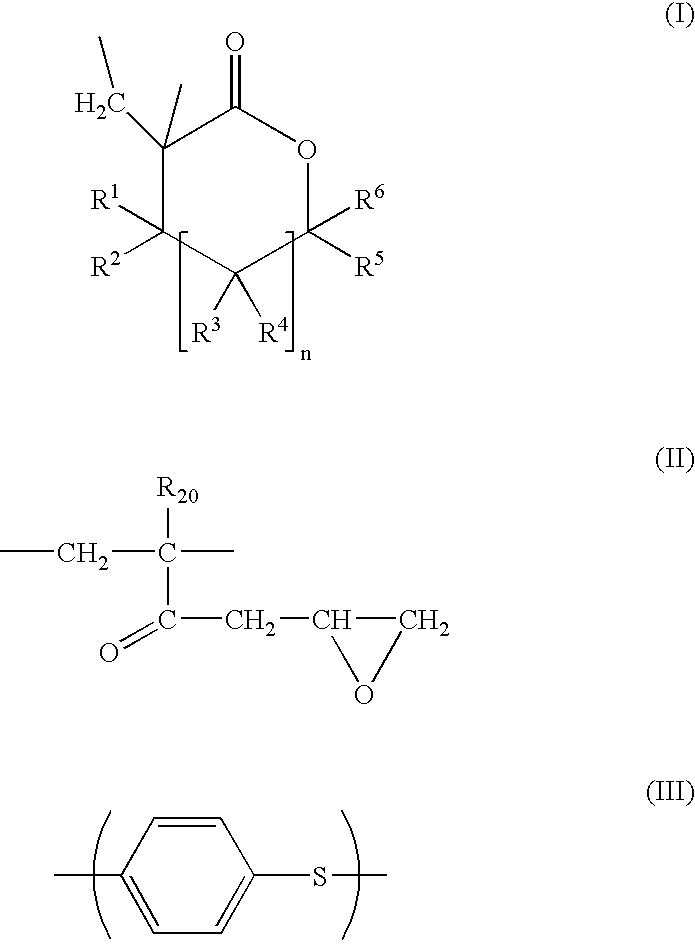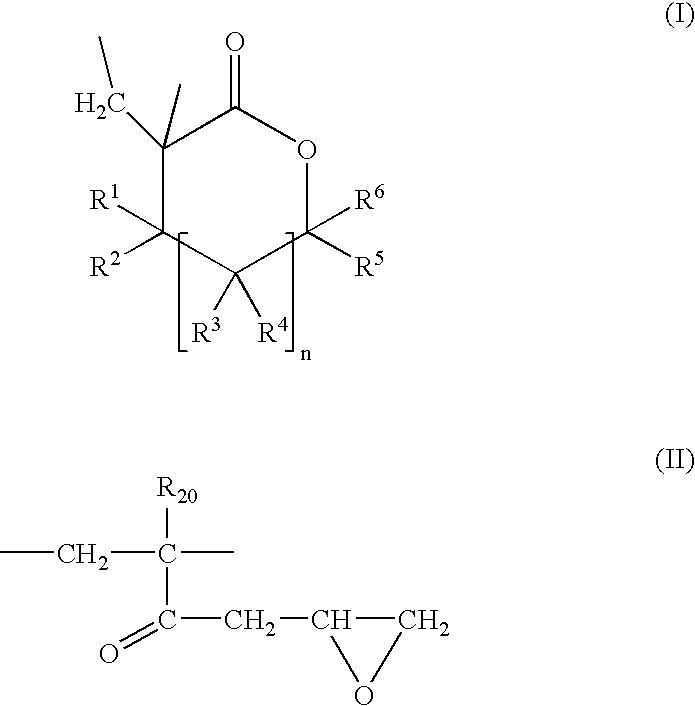Blends of poly (alpha-methylene-gamma-methyl-gamma-butyrolactone-co-glycidyl methacrylate) and polyphenylene sulfide polymer, articles therefrom and preparation thereof
- Summary
- Abstract
- Description
- Claims
- Application Information
AI Technical Summary
Benefits of technology
Problems solved by technology
Method used
Image
Examples
examples 1-4
[0103] In Example 1, 80% by weight of high molecular weight Ryton.RTM. PPS was blended with 20% by weight of MeMBL / GMA copolymer wherein the copolymer contained 4% GMA.
[0104] In Example 2, 65% by weight of high molecular weight Ryton.RTM. PPS was blended with 20% by weight of MeMBL / GMA copolymer wherein the copolymer contained 4% GMA, and 15% of EBAGMA containing 5% by weight of GMA.
[0105] In Example 3, 70% by weight of Ryton.RTM. PR34 PPS with Surlyn.RTM. and EBAGMA (in a blend) impact modifiers, was blended with 30% by weight of MeMBL / GMA copolymer wherein the copolymer contained 4% GMA.
[0106] In Example 4, 100% of high molecular weight Ryton.RTM. PPS was used as a baseline study.
[0107] Samples were molded on a 1.5 oz. injection-molding machine at 280.degree. C.
2 Examples 1 2 3 4 Parts Parts Parts Parts High MW Ryton .RTM. PPS 80 65 0 100 homopolymer PPS / Surlyn .RTM. / Ebagma blend 0 0 70 0 (65% Ryton .RTM.PR34, 28.2% Ebagma, 5.6% Surlyn .RTM.9320, 1.2% Irganox .RTM. 1010) 4% GMA / Me...
PUM
| Property | Measurement | Unit |
|---|---|---|
| weight fraction | aaaaa | aaaaa |
| particle size | aaaaa | aaaaa |
| particle size | aaaaa | aaaaa |
Abstract
Description
Claims
Application Information
 Login to View More
Login to View More - R&D
- Intellectual Property
- Life Sciences
- Materials
- Tech Scout
- Unparalleled Data Quality
- Higher Quality Content
- 60% Fewer Hallucinations
Browse by: Latest US Patents, China's latest patents, Technical Efficacy Thesaurus, Application Domain, Technology Topic, Popular Technical Reports.
© 2025 PatSnap. All rights reserved.Legal|Privacy policy|Modern Slavery Act Transparency Statement|Sitemap|About US| Contact US: help@patsnap.com



